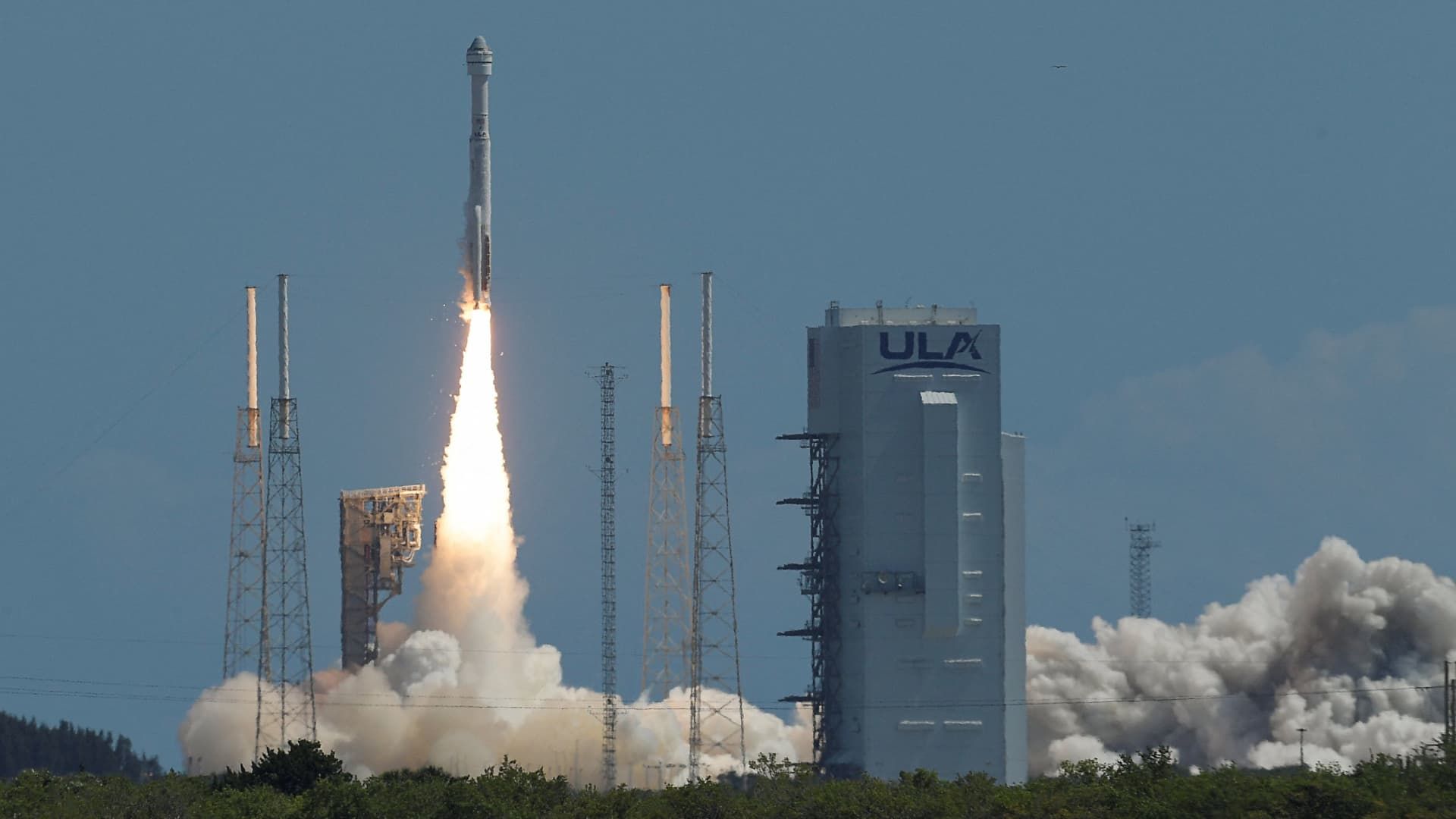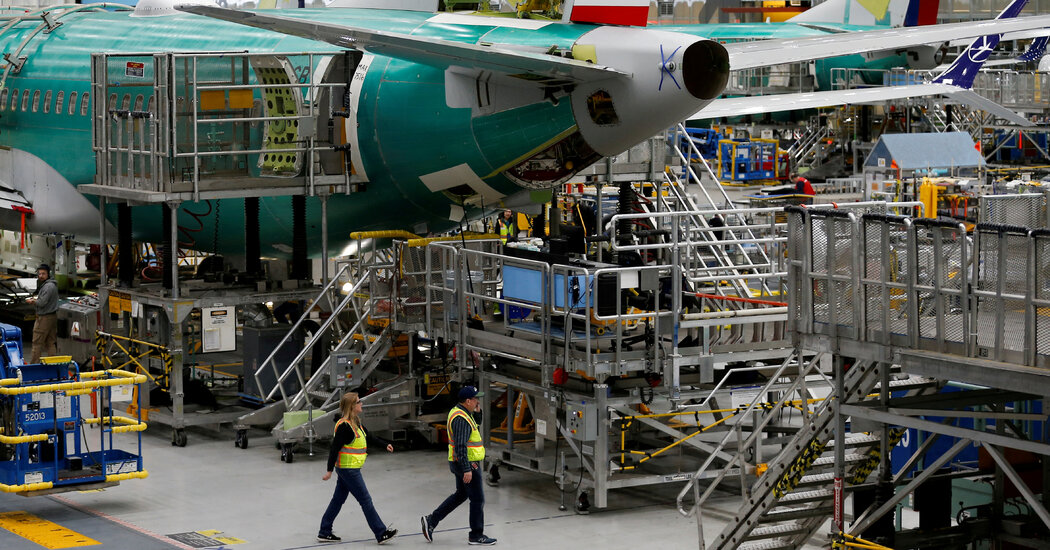boeing launched its first Starliner flight with astronauts on Wednesday, beginning a crucial final flight test of the long-delayed spacecraft.
The launch took off at 10:52 a.m. ET from Cape Canaveral, Florida, with two NASA astronauts on board. Starliner is carried by a United Launch Alliance Atlas V rocket and is destined for the International Space Station.
About 15 minutes after launch, the rocket launched the Starliner capsule into orbit as planned, and the flight proceeded as expected, according to mission control.
A United Launch Alliance Atlas V rocket carrying two astronauts aboard Boeing's Starliner-1 Crew Flight Test launches on a mission to the International Space Station, Cape Canaveral, Florida, on June 5, 2024.
Steve Nesius | Reuters
NASA's launch broadcast also noted that although Starliner has onboard cameras to show the interior and exterior of the cabin, Boeing will not be able to transmit the video to Earth until the spacecraft reaches the ISS.
Starliner will fly into space for about 25 hours before docking with the ISS at 12:15 p.m. Thursday. The astronauts will then spend about a week on the ISS, focused on testing Starliner, before returning to Earth.
Boeing's crewed flight test aims to certify that the Starliner system is capable of transporting NASA astronauts to and from the ISS.
Wednesday's liftoff comes after a series of attempts to launch the mission. On Saturday, a launch attempt was canceled in the final minutes of the countdown due to a problem with one of the computers that provides ground support for the rocket. In early May, another attempt was canceled due to a problem detected in the rocket itself.
Sign up here to receive weekly editions of CNBC's Investing in Space newsletter.
United Launch Alliance, or ULA, a joint venture of Boeing and Lockheed Martin — replaced the rocket's problematic valve after the May attempt and replaced a faulty part in the ground infrastructure computer after Saturday's attempt.
United Launch Alliance's Atlas V rocket carrying Boeing's CST-100 Starliner spacecraft sits at Space Launch Complex 41 at the Kennedy Space Center in Cape Canaveral, Florida, June 3, 2024.
Miguel J. Rodríguez Carrillo | AFP | fake images
Between the two previous launch attempts, NASA and Boeing found a “small” helium leak on Starliner, prompting the agency and company to conduct another series of evaluations.
After analysis, NASA and Boeing said the source of the leak was in the spacecraft's helium propulsion system. But officials said after an investigation that the leak was “stable” and “not a flight safety issue.”
Spatial competition
A United Launch Alliance Atlas V rocket carrying two astronauts aboard Boeing's Starliner-1 Crew Flight Test launches on a mission to the International Space Station, Cape Canaveral, Florida, on June 5, 2024.
Joe Captain | Reuters
the astronauts
NASA astronauts Butch Wilmore, right, and Suni Williams wait for liftoff inside the Boeing Starliner capsule at Space Launch Complex 41 in Cape Canaveral, Florida, June 5, 2024.
NASA via AP
Butch Wilmore and Suni Williams fly in Starliner, the former being the commander of the spacecraft and the latter the pilot.
Wilmore joined NASA in 2000 and previously flew into space twice on the space shuttle and Russia's Soyuz. Prior to NASA, Wilmore was a US Navy pilot.
NASA astronauts Butch Wilmore, left, and Suni Williams.
Credit: Kim Shiflett | POT
Williams was selected by NASA in 1998 and has also flown into space twice before, on the space shuttle and then on the Soyuz. Williams was also a Navy pilot, like Wilmore, before joining the space agency.
The rocket and the capsule.
Boeing's Starliner spacecraft atop United Launch Alliance's Atlas V rocket is seen on the launch pad of Space Launch Complex 41 at Cape Canaveral Space Force Station in Florida on May 30, 2024.
Isaac Watson | POT
Starliner launches on ULA's Atlas V. The rocket debuted in 2002 and the Starliner crew flight test represents its 100th launch.
The capsule itself is built to carry up to four NASA astronauts per flight and more than 200 pounds of research and cargo. The spacecraft lands using a parachute and airbag system. Starliner is reusable and each capsule is designed to carry out up to 10 missions.










